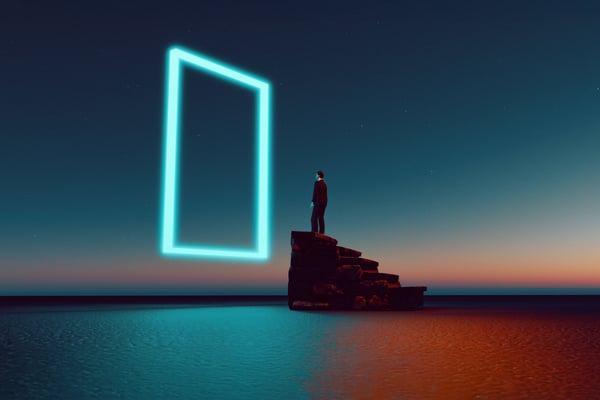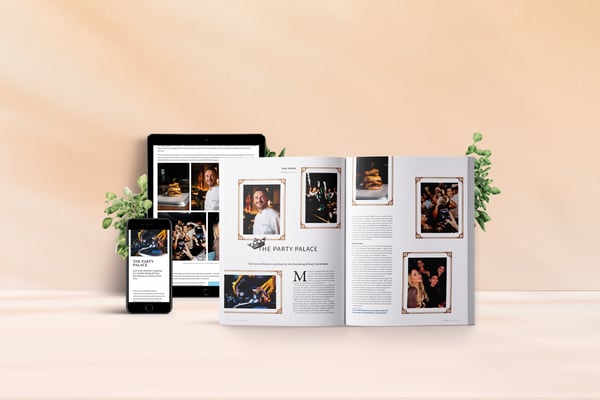
What’s next for luxury digital marketing?
Wendy Brooking,
-
DOWNLOAD
Your Content Marketing Checklist >

-
REQUEST TODAY
A Content Consultation >

Digital marketing is essential for luxury brands, reflecting its growing significance across all sectors. While many of the key principles forming the essence of what it means to be luxury are still of utmost importance, the ways in which they are consumed has evolved as a new generation enters the core clientele.
For any brand, refining their approach when it comes to luxury digital marketing and luxury content marketing is essential.
Defining luxury
Historically, luxury brands have been distinguished by their skilled craftsmanship, material ostentation or hard-to-acquire reputations, which are linked to history, exclusiveness and/or connections to prestigious and revered individuals.
Sophistication and exceptionalism are also closely tied to perceptions of luxury, along with newer expectations of personalisation, particularly during the purchasing process. All these factors add to the desirability of a brand, drawing consumers towards its products and community, and setting it apart from competitors.
Boutique design agency SO highlighted that quality was one of the most important attractors to a brand, as “often luxury brands started life with teams of skilled workers in small workshops, so artisan craftsmanship becomes central to their identity”. A rich heritage was also highly valued, establishing a brand’s longevity and years of industry knowledge.
On top of this, consumers are becoming increasingly attentive to how sustainable luxury brands are.
Evolving luxury consumers: new demographics, new expectations
The demographics of the core luxury clientele have changed, with Generation X and Millennials making up 35% of the global luxury goods market in 2024. Gen Z comprises 17% of the same market, marking a significant shift in younger consumers’ growing interest in luxury brands.
This generational transition has brought new customer values. While older generations value luxury for its heritage and craftsmanship, younger consumers prioritise innovation and sustainability. However, the in-store experience remains crucial. Businesswire reported that the physical shopping experience is still paramount, with 57% of consumers opting to buy luxury goods from a physical shop.
Embracing new approaches in luxury digital marketing
Evolving with these developments, luxury brands are adjusting in several ways. Research suggests that customers are keen to see brands supporting causes, particularly those related to the environment and health.
Across the spectrum of luxury goods, there are key marketing strategies to consider in order to find success in a digital landscape: creating digital relationships with customers, building a story and utilising data insights for the ‘laser targeting’ of audiences.
Digital relationships
In an increasingly digital market, the importance of creating a positive digital relationship with customers cannot be overlooked. Data from GO-globe discovered that 65% of consumers believed that a good product experience held more sway than advertisements, further proving the power of a carefully curated digital customer experience.
But what makes for a positive digital journey?
Similar to the in-person shopping experience with luxury brands, personalisation is key. Tailoring experiences helps to remove the sense of anonymity for digital visitors and encourages them to engage with the brand, differentiating it from other websites.
Personalisation is not only beneficial to the customer but to the brand, as a Mckinsey study found that consumers are 78% more likely to make repeat purchases from companies that use personalised content.
Technology-wise, website speed is incredibly important. Findings from DigitalSilk show that pages which took longer than three seconds to load led to 21% of customers leaving the site. On average, websites that took too long to load cost retail companies around $2.6 billion every year in lost sales. Optimising site speeds for faster customer journeys should therefore be a priority and can directly influence sales.
Beyond the browsing and purchasing stages, customer aftercare must also be seamless and can make or break a brand in the eyes of a consumer. Daniel Langer, CEO of Équité and Professor at Pepperdine University, has found that “at the heart of these breakups lies a fundamental feeling: the perception of being devalued. This manifests across multiple dimensions, each capable of destroying the delicate bond between a luxury brand and its most discerning clients.”
To minimise losing customers via cracks in an otherwise smooth digital journey, Langer advises that responses should be timely, deeply caring and, as with the initial browsing stages, personalised. Langer says, “in an era where consumers crave authenticity and personal connection, transactional interactions are the silent killer of luxury sales.”
Responding to negative experiences in this manner is not only crucial for retaining the customer, but also for preventing the alienation of new buyers, who may be discouraged by an impersonal user experience.
Storytelling for luxury brands
Successful brand stories are defined with precision, offering entertaining and unique experiences for consumers. The primary purpose of these stories is to create desire: the more customers engage with a brand, the more they can come to value it beyond the functionality of the products themselves. Langer refers to this as Added Luxury Value and highlights that in 2025, evolving client expectations mean a compelling and consistent brand story is more critical than ever.
Across this content, consistency is paramount – and this consistency is required to span multiple platforms and media. Fresh approaches to content have incorporated the use of augmented reality, virtual tours and interactive content, to create material that is as elevated as the product itself.
Coach is a brand that has expanded its presence into a new digital space. Building on its participation in Metaverse Fashion Week 2023, Coach made its debut in gaming and virtual worlds with a dynamic new collection. The brand launched the ‘Find your courage’ spring 2024 collection across virtual platforms including Roblox’s Fashion Famous 2, Fashion Klossette, and the avatar-based social app Zepeto (which has previously partnered with Gucci, too).
This campaign allowed users to fully immerse themselves in Coach’s digital universe, styling their avatars in the brand’s latest designs and accessories. The collection introduced Imma, a virtual character who embarked on a journey of self-discovery through five themed worlds, each exploring different facets of self-expression.
This form of content has become increasingly important, not only for the shift to digital, but also in order to appeal to younger generations. Gen Z spend approximately 10.6 hours engaging with online content per day, according to Arise. However, this is not to say that more traditional marketing techniques, such as email marketing, should be abandoned.
Read more about storytelling for luxury brands.
Laser targeting
Interlinked with the personalisation of content, laser targeting uses both big data and AI to build customer profiles and service customers tailored content and recommendations. This type of targeting is most effective when it taps into the emotional needs of a customer and, with personalised experiences increasingly becoming an expectation, is vital at all stages of the digital journey.
The volume of customer data currently collected is unparalleled and is set to increase rapidly from 2024 to 2028, according to Statista. This data can span purchase histories, digital interactions within the company, social media interactions and movements both online and in the physical world. All of these can be used to build behavioural biometric profiles of customers, which can be used to inform the content they receive.
Using this information to appeal to a customer’s emotions can be useful for building affinity and benefits the consumer because it helps them to feel valued and positive about the brand through its strong digital relationships.
What's next for luxury?
While we have focused on digital marketing and the intent of engaging consumers to buy physical products, some brands are already offering digital versions of their goods.
Gucci’s Dionysus Bag with Bee, for example, was reinvented for online gaming platform Roblox. It sold for $4,115, a price far in excess of the physical bag’s cost in the real world. However, this could well be a sign of things to come, as multiple platforms work towards the development of a metaverse and customer journeys increasingly take place digitally. The growth of virtual worlds such as Roblox is also continuing, with their combined revenue predicted to approach $400 billion by the middle of the decade.
What we can witness is the increasing digital focus and digitisation of luxury brands. As we have seen, this requires investment in technology in order to benefit from the value AI and personalisation can bring. Just as significant should be the investment in content through which to attract and respond to consumers and their appetites around luxury.
For now, luxury brands should focus on creating a strong digital presence, using data to improve targeting and fostering digital relationships to win over the luxury consumer of tomorrow.
Read more about Dialogue’s expertise in luxury content marketing and find out how our in-house experts will help you reach, engage and commercialise your discerning luxury audience.
Resources
Generation X and Millennials making up 35% of the global luxury goods market in 2024 – Mediaculture
57% of consumers opt to buy luxury goods from a physical shop – Businesswire
65% of consumers believed that a good product experience held more sway than advertisements – GO-globe
Consumers are 78% more likely to make repeat purchases from companies that use personalised content – On24 – McKinsey
Pages which took longer than three seconds to load led to 21% of customers leaving the site – DigitalSilk
Why wealthy clients break up with brands – Daniel Langer – Jing Daily
Gen Z spend approximately 10.6 hours engaging with online content per day – Arise
Read more insightful articles
See more from the blogThe changing face of the luxury consumer
Evaluating the success of your email strategy
How to create a digital magazine
How to repurpose content
Proud to be a winner of industry awards, recognised as content marketing experts in print and digital media.












